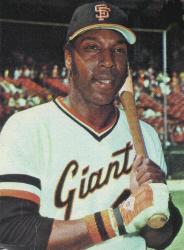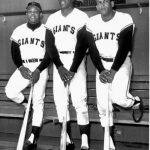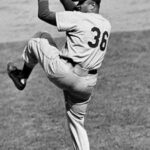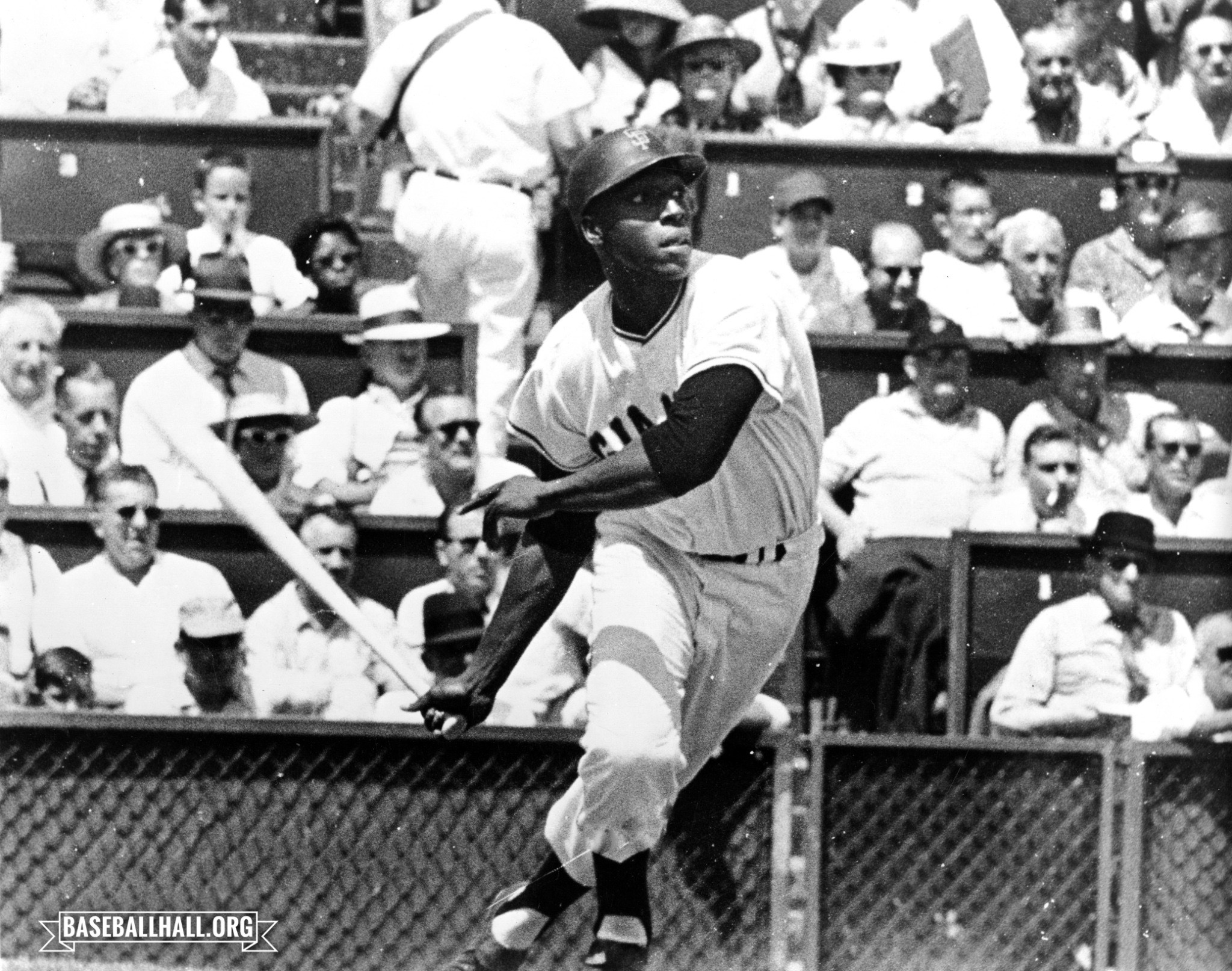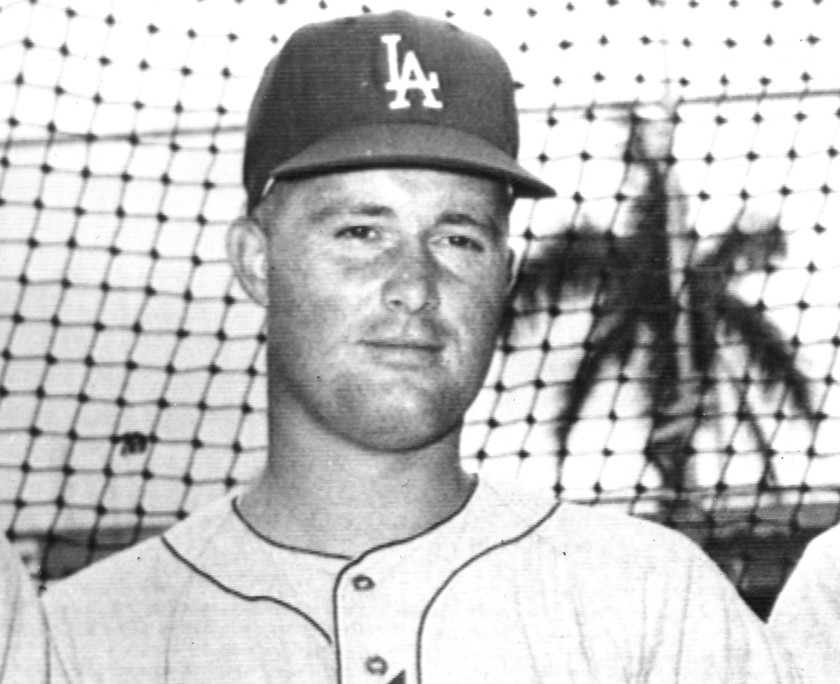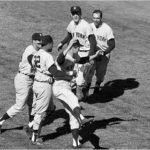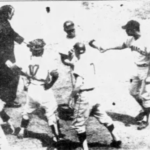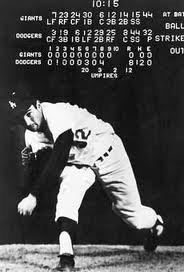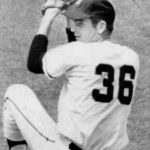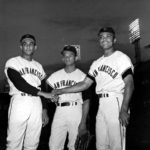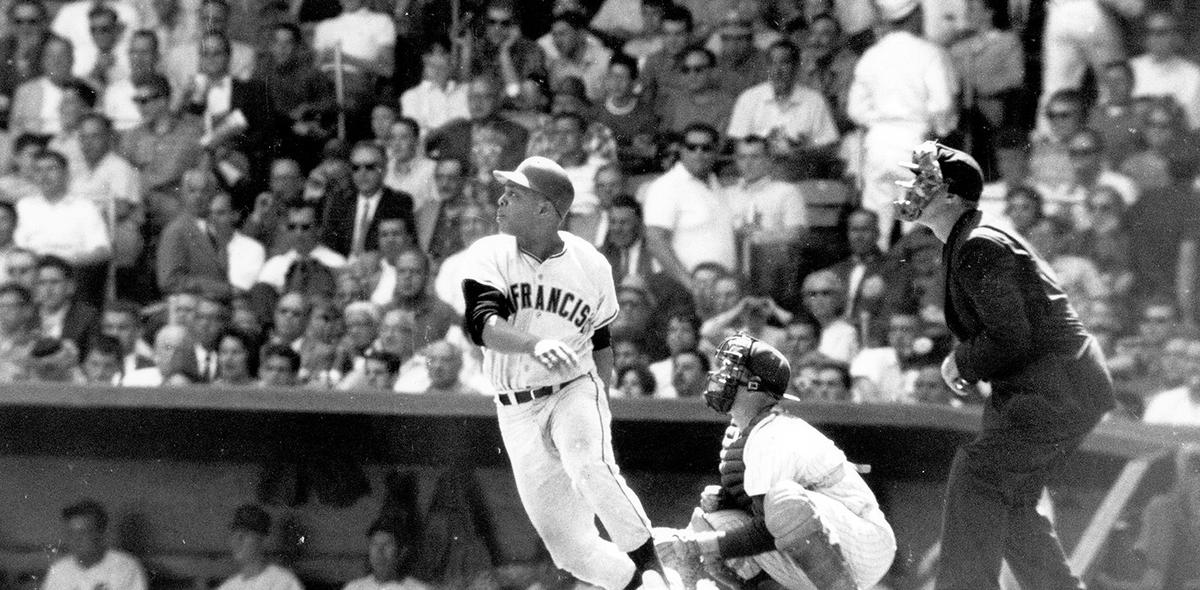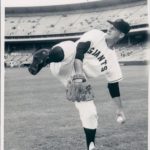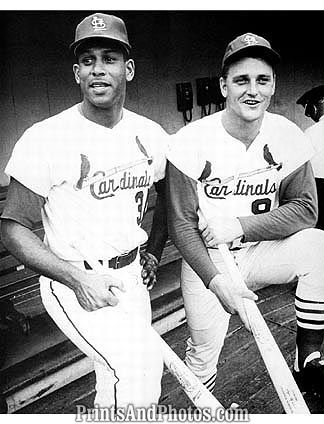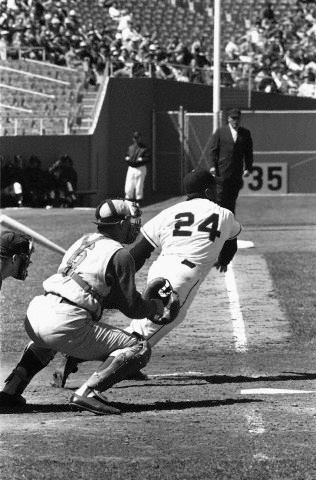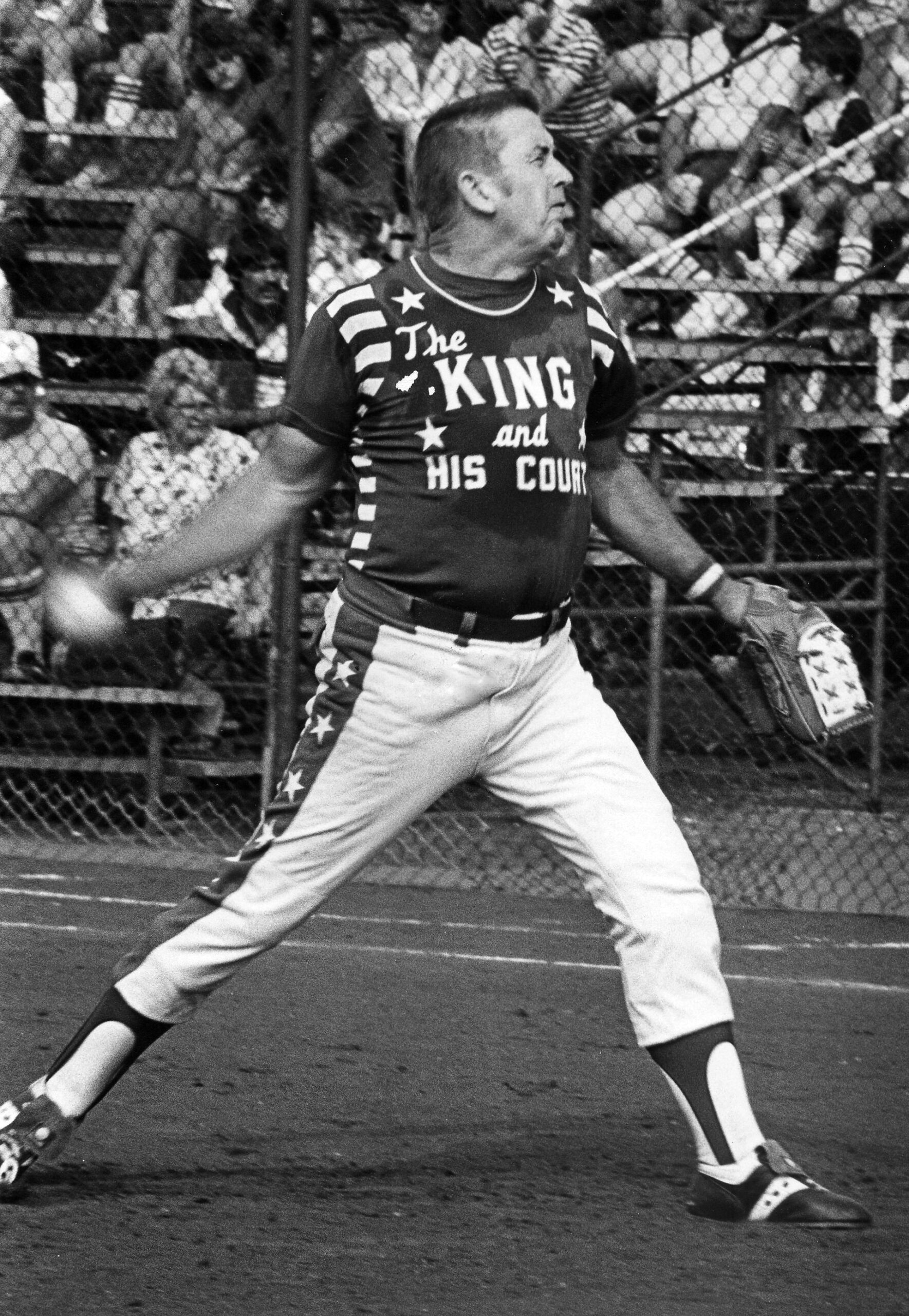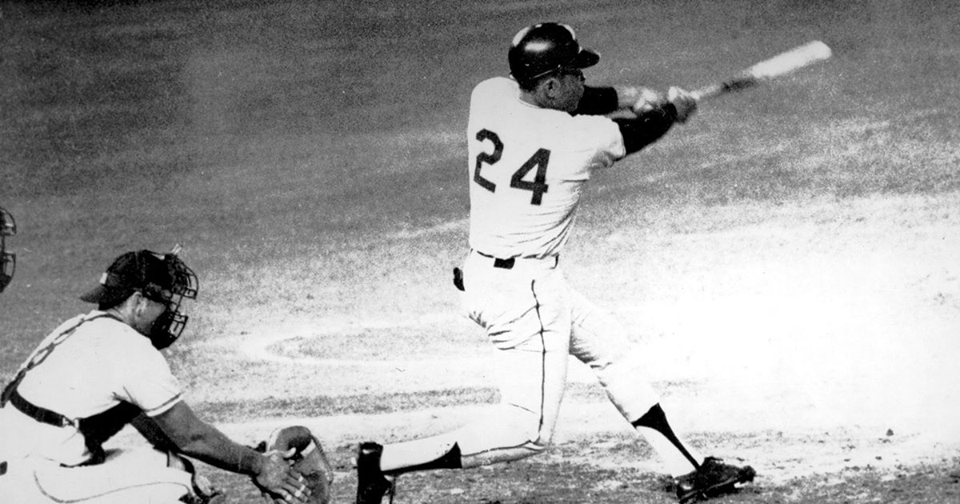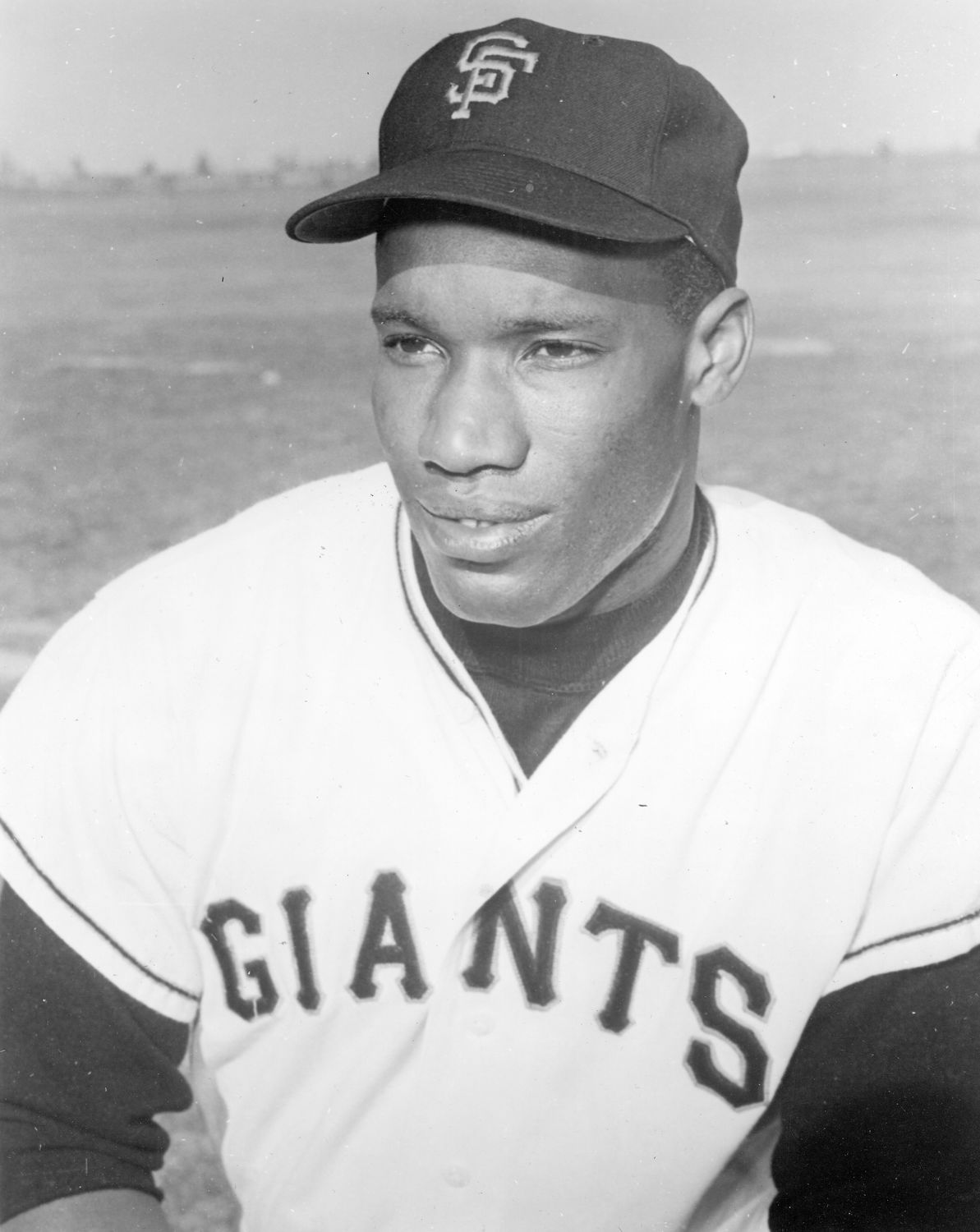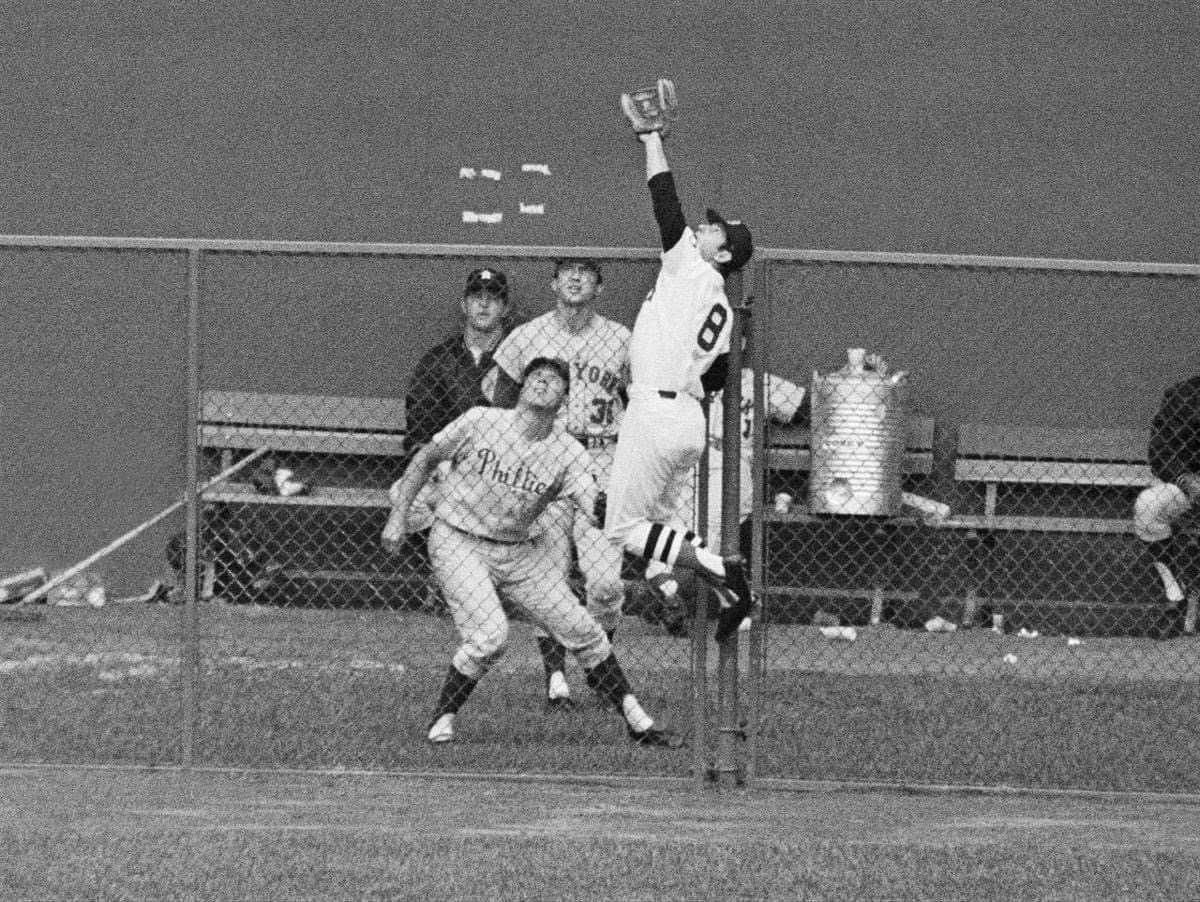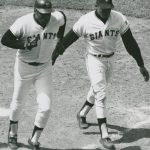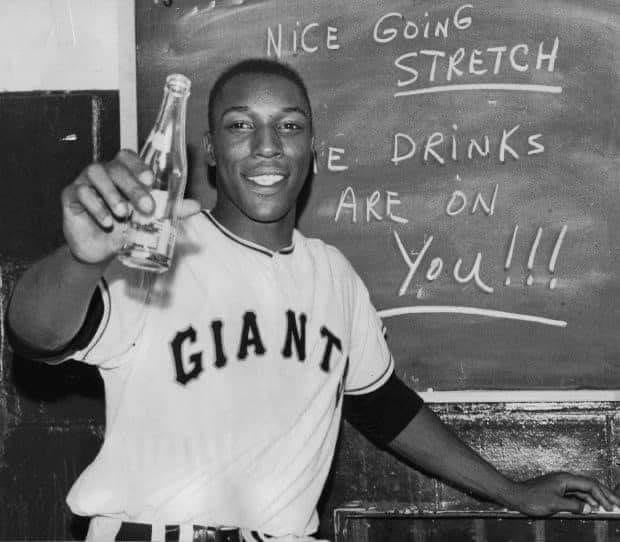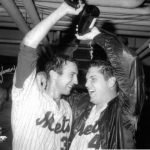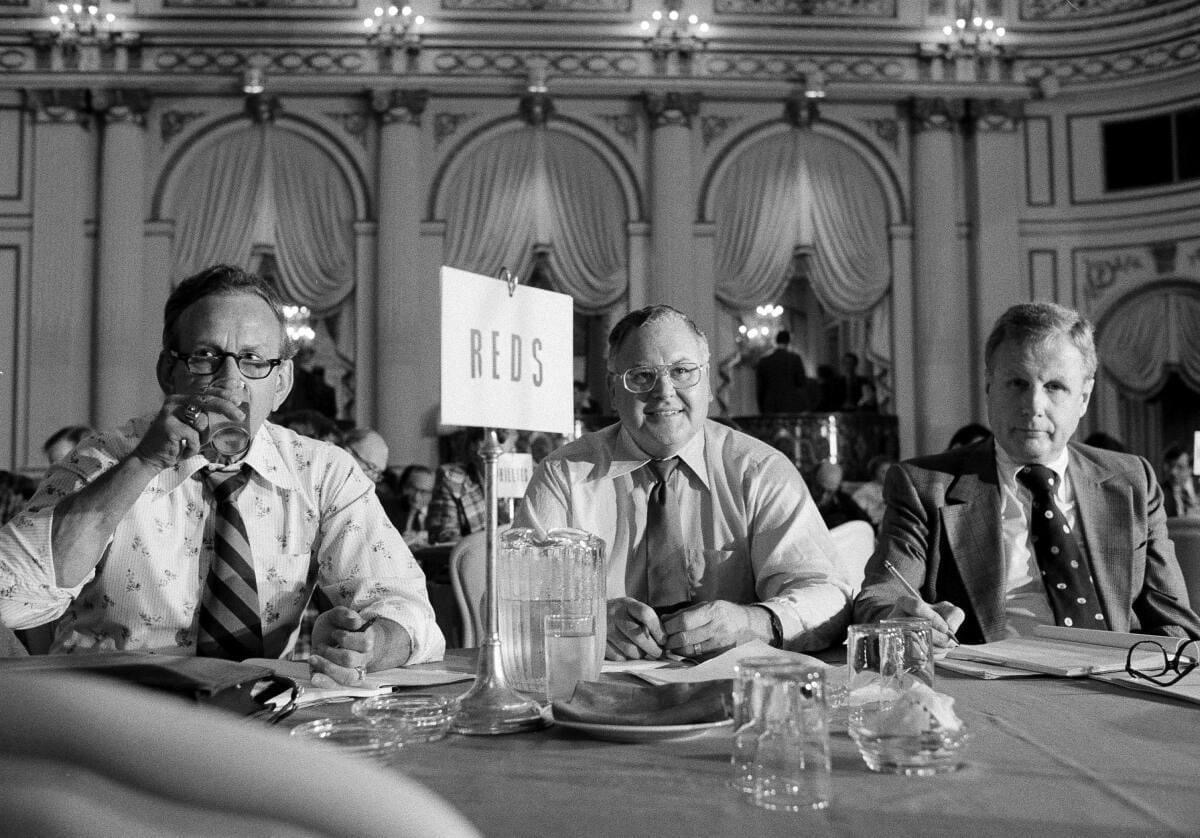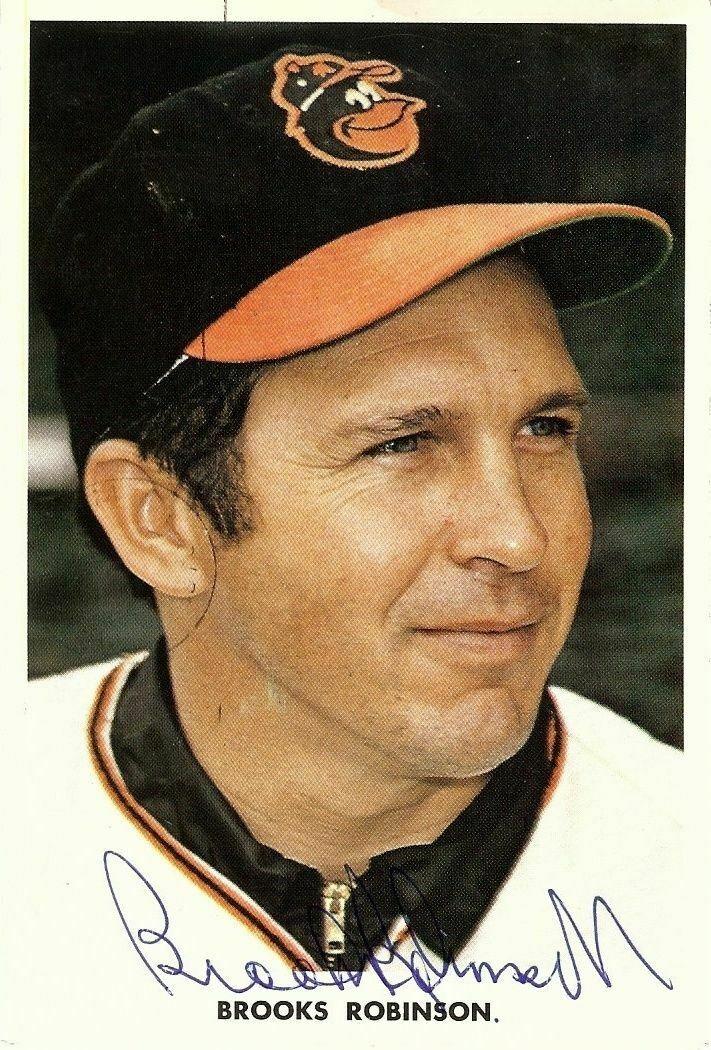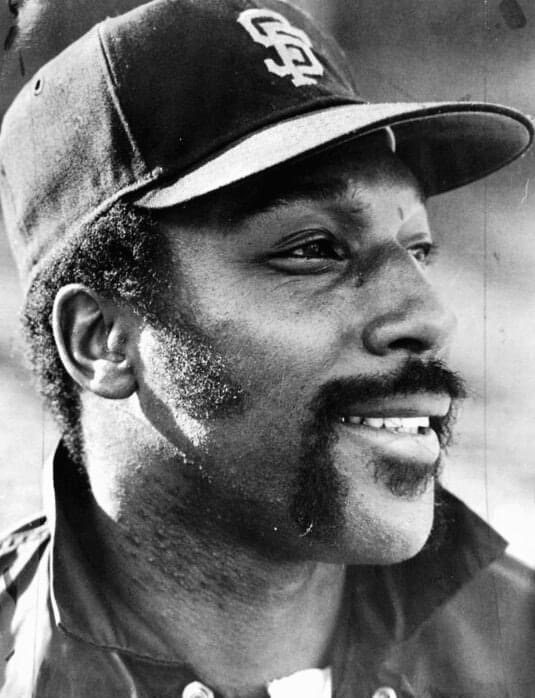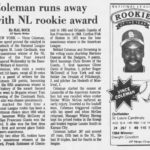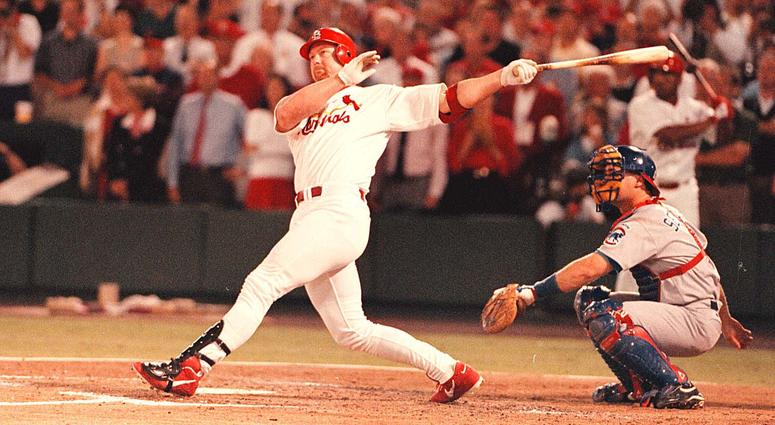Willie McCovey Stats & Facts
Willie McCovey
Positions: First Baseman and Leftfielder
Bats: Left • Throws: Left
6-4, 198lb (193cm, 89kg)
Born: January 10, 1938 in Mobile, AL us
Died: October 31, 2018 in Palo Alto, CA
Buried: Cypress Lawn Memorial Park, Colma, CA
High School: Central HS (Mobile, AL)
Debut: July 30, 1959 (11,666th in major league history)
vs. PHI 4 AB, 4 H, 0 HR, 2 RBI, 0 SB
Last Game: July 6, 1980
vs. LAD 0 AB, 0 H, 0 HR, 1 RBI, 0 SB
Hall of Fame: Inducted as Player in 1986. (Voted by BBWAA on 346/425 ballots)
View Willie McCovey’s Page at the Baseball Hall of Fame (plaque, photos, videos).
Full Name: Willie Lee McCovey
Nicknames: Stretch, Mac or Big Mac
View Player Info from the B-R Bullpen
View Player Bio from the SABR BioProject
Nine Players Who Debuted in 1959
Willie McCovey
Billy Williams
Maury Wills
Tommy Davis
Jim Kaat
Tim McCarver
Jim Perry
Mike Cuellar
Zoilo Versalles
All-Time Teammate Team
Coming Soon
Baseball is the only game you can watch on the radio. Join the community today and listen to hundreds of broadcasts from baseball’s golden age
Notable Events and Chronology
Biography
Perhaps the most feared hitter of his time, Willie McCovey not only intimidated National League pitchers but he also weakened the knees of opposing managers throughout his Hall of Fame career. Gene Mauch, who managed the Philadelphia Phillies during the mid-1960s, said of McCovey, “He’s the most awesome hitter I’ve ever seen.”
Longtime Dodger manager Walter Alston expressed his admiration for McCovey’s prodigious power when he stated, “McCovey didn’t hit any cheap ones. When he belts a home run, he does it with such authority it seems like an act of God. You can’t cry about it.”
The 6’4″, 230-pound McCovey teamed up with Willie Mays during the 1960s to give the San Francisco Giants one of the most lethal combinations in baseball history. The duo combined to lead the Giants to one pennant and five second-place finishes between 1962 and 1969, with one or the other leading the National League in home runs in six of those eight seasons. McCovey topped the senior circuit in homers three times during that period, capturing N.L. MVP honors in 1969, when he established career highs with 45 home runs, 126 runs batted in, a .320 batting average, a .458 on-base percentage, and a .656 slugging percentage. By the time he retired at the end of the 1980 campaign, McCovey compiled a total of 521 home runs, placing him third among National League players and tying him with Ted Williams for tenth-place on the all-time home run list. McCovey’s prolific slugging gained him admittance to Cooperstown in his very first year of eligibility.
Born in Mobile, Alabama on January 10, 1938, Willie Lee McCovey excelled in baseball to such a degree as a youngster that he played on men’s teams in his hometown during his teenage years. After graduating from Mobile’s Central High School, McCovey signed with the New York Giants as an amateur free agent in 1955. He spent the next three years advancing through the team’s minor league farm system, finally making it to the Pacific Coast League in 1958, the same year the Giants relocated to the West Coast. The big first baseman hit .319 and knocked in 89 runs for the team’s Triple-A affiliate that year, but found himself back in the minors the following campaign since the Giants already had 1958 N.L. Rookie of the Year Orlando Cepeda playing first base for them.
Nevertheless, San Francisco had no choice but to promote McCovey to the major leagues after he batted .372, with a league-leading 29 home runs and 92 RBIs in 95 PCL games in 1959.
McCovey made his debut with the Giants on July 30, 1959, going four-for-four, with two triples, against future Hall of Famer Robin Roberts. Although he ended up appearing in only 52 games the remainder of the year, McCovey walked away with National League Rookie of the Year honors after hitting 13 homers, driving in 38 runs, and batting .354 over the season’s final two months.
McCovey slumped badly the following year, prompting the Giants to demote him to the minor leagues for a brief period of time. Exacerbating the 22-year-old slugger’s problems was the irregular amount of playing time he received with the Giants due to the presence of Cepeda at first base. Although the lefthanded-swinging McCovey eventually righted himself after returning to the team later in the year, he spent most of the next three seasons splitting his time between first base and the outfield, usually giving way to righthanded hitters Cepeda and Felipe Alou whenever the team faced left-handed pitching. Still, McCovey produced more often than not when his name was entered on the lineup card, combining for 38 home runs and 104 RBIs in only 557 official at-bats between 1961 and 1962. It was in the second of those two seasons that McCovey stepped to the plate for perhaps the most memorable at-bat of his career.
With the Giants trailing the Yankees 1-0 in the bottom of the ninth inning of Game Seven of the 1962 World Series, McCovey stepped into the batter’s box with two men out and runners on second and third. After driving New York pitcher Ralph Terry’s first offering just foul beyond the outfield fence in right field, McCovey subsequently hit a screaming line drive right at Yankee second baseman Bobby Richardson that he snared to bring the Fall Classic to an abrupt ending. McCovey later called the drive “the hardest ball I ever hit.”
Although McCovey continued to split his time between first base and the outfield, he became a full-time starter on the Giants in 1963. Appearing in 152 games for San Francisco, the lefthanded slugger led the National League with 44 home runs, knocked in 102 runs, scored 103 others, and batted .280. After a sub-par 1964 campaign, McCovey rebounded by combining for 75 home runs and 188 runs batted in over the course of the next two seasons. A knee injury to Cepeda in 1965 gave McCovey the starting first base job, a position he never relinquished during his remaining years in San Francisco.
Before long, McCovey became a favorite of Giant fans, who admired him as much for his gentle nature as for his prodigious power. While the San Francisco faithful never fully accepted Willie Mays as one of their own since the team’s greatest player had his baseball roots in New York, they viewed McCovey as one of the city’s very own. McCovey later noted, “When I first came here, Major League Baseball was still fairly new…Fans adopted players, and I was one of those adopted, partly because I made San Francisco my home. Most players didn’t live here, but I was here year-round and did a lot of off-season promotions for the club, so they got to know me.”
McCovey’s powerful lefthanded bat added to his popularity with Giant fans. Capable of hitting a ball as far as anyone in the game, McCovey registered a home run in 1966 that traveled an estimated 500 feet, making it the longest home run in the history of San Francisco’s Candlestick Park. The swirling winds at the Giants’ home ballpark seemed to have little effect on McCovey’s powerful blows, which provided numerous souvenirs over the years to fans adventurous enough to pursue them as they traveled well beyond the right field fence.
McCovey’s tendency to pull almost everything to the right side of the diamond caused opposing teams to adopt the McCovey Shift, in which they typically placed three infielders between first and second base. Some teams even shifted one of their infielders to the outfield, presenting a defense to the slugger that featured a four-man outfield.
Commenting on the strategy opposing managers often employed against him, McCovey later suggested, “Even with the cold and the wind, I never changed my game. They pulled more crazy shifts on me than anyone in baseball, including Ted Williams. They did a lot of things to try to make me change, but I never altered my approach at the plate. I tried to do the same thing whether I was at Candlestick Park, Dodger Stadium, or Wrigley Field.”
After spending his first several years playing in the shadow of the great Willie Mays, McCovey began to establish himself in 1967 as San Francisco’s primary power threat and as arguably the most feared hitter in the game. He clubbed 31 homers and drove in 91 runs in 1967, then followed that up by leading the National League in home runs and RBIs in each of the next two seasons. McCovey finished the 1968 campaign with a .293 batting average and a league-leading 36 homers, 105 runs batted in, and a .545 slugging percentage. McCovey’s 45 homers, 126 RBIs, .458 on-base percentage, and .656 slugging percentage all topped the senior circuit the following year, and he also placed among the league leaders with 101 runs scored and a .320 batting average. McCovey had another big year in 1970, batting .289, scoring 98 runs, leading the league with a .612 slugging percentage, and placing near the top of the league rankings with 39 home runs, 126 runs batted in, and a .446 on-base percentage. He also led the league with 137 walks, including a then major-league record 42 of the intentional variety.
Although McCovey remained a productive hitter for the next few years, the 1970 campaign turned out to be his last year as an elite player. He began experiencing knee problems in 1971 that severely limited his playing time for the remainder of his career. After appearing in fewer than 105 games for the Giants in two of the next three seasons, McCovey was traded to the San Diego Padres at the end of 1973. He spent three years in San Diego, made a brief stop in Oakland, and then returned to the Giants in 1977. Playing in pain throughout that 1977 campaign, McCovey still managed to hit 28 home runs, knock in 86 runs, and bat .280 for the team that originally signed him to a major league contract. He spent another three years in San Francisco, finally retiring at the end of the 1980 campaign with 521 career home runs, 1,555 runs batted in, 1,229 runs scored, and a .270 batting average. He hit more than 30 homers seven times, knocked in more than 100 runs four times, scored more than 100 runs twice, batted over .300 twice, and collected more than 100 bases on balls three times. In addition to winning the N.L. MVP Award in 1969, McCovey finished in the top 10 in the voting three other times. He was named to the All-Star Team on six separate occasions.
McCovey initially stayed away from the game following his retirement, although he returned briefly to the limelight when the members of the BBWAA elected him to the Hall of Fame in 1986, in his first year of eligibility. He has since returned to the Giants as an advisor. The team honored the former slugger by erecting a statue of him across from AT&T Park, and by naming the land on which it stands McCovey Point. The inlet of San Francisco Bay beyond the right field fence at the Giants’ new ballpark, historically known as China Basin, has been redubbed McCovey Cove in his honor.
Unfortunately, the knee problems that plagued McCovey throughout the second half of his career have gotten progressively worse since he left the game. Several ill-advised surgeries did more harm than good, and the former Giants great now finds himself unable to walk without assistance. Once the epitome of youth and power, Willie McCovey now says, “I can only get around on crutches and walkers.”
@ET-DC@eyJkeW5hbWljIjp0cnVlLCJjb250ZW50IjoicG9zdF90YWdzIiwic2V0dGluZ3MiOnsiYmVmb3JlIjoiTGVhcm4gTW9yZSBhYm91dCB0aGUgdGVhbXMsIHBsYXllcnMsIGJhbGwgcGFya3MgYW5kIGV2ZW50cyB0aGF0IGhhcHBlbmVkIG9uIHRoaXMgZGF0ZSBpbiBoaXN0b3J5IC0gLSAtIC0gLSAtIC0gIiwiYWZ0ZXIiOiIiLCJsaW5rX3RvX3Rlcm1fcGFnZSI6Im9uIiwic2VwYXJhdG9yIjoiIHwgIiwiY2F0ZWdvcnlfdHlwZSI6InBvc3RfdGFnIn19@
Baseball is the only game you can watch on the radio. Join the community today and listen to hundreds of broadcasts from baseball’s golden age
Factoids, Quotes, Milestones and Odd Facts
Coming soon
Other Resources & Links
If you would like to add a link or add information for player pages, please contact us here.

